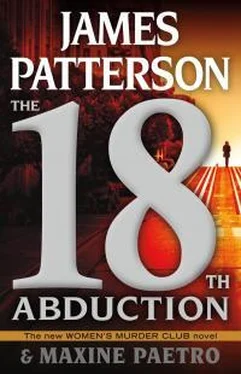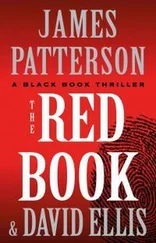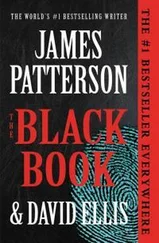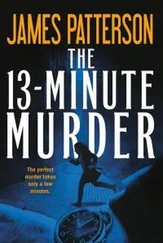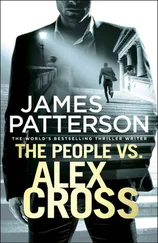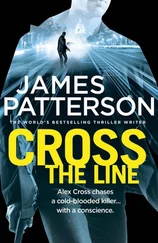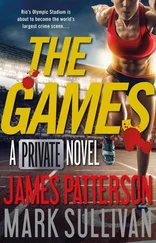Late as I was that day, I knew Cindy would make use of the found time to return calls, check in with sources, write notes, or draft her story. When I showed up, she’d jump right into the business at hand—or grill me until I gave her a scrap of printable news.
But in return she was likely to tell me something I didn’t know.
The OPEN sign hanging in Fast ’n Good’s plate-glass window was blinking. I pulled the door open and scanned the place from the vestibule until I saw the mop of blond curls showing over the back of a booth. I strode down the aisle, slid into the banquette across from Cindy, and said, “Hey. Sorry to hold you up.”
I could already see the question in her cornflower-blue eyes.
“You anywhere with the schoolteachers?” she asked.
“Just what I had yesterday, girlfriend. Nothing. Please don’t rub it in.”
Chapter 12
Cindy put down her half-eaten BLT and said, “I give the tomato rice four stars.”
I ordered a cup of soup and a grilled cheese with bacon. Then I said, “Whatcha got for me?”
She poked at her cell phone and called up a photo of a woman stooping to hug a large dog that was washing her face with its tongue.
Cindy said, “Look past the girl and dog.”
I enlarged the photo, bringing up the couple in the background walking across a parking lot away from the camera. The male was lanky, taller than the woman, and had spiky hair. The female had turned to look at the male. Her face was in profile. Yellow lines on the asphalt marked parking spots. I could see one side of a dark SUV and almost make out a building at the edge of the frame.
“Okay. What am I looking at?”
“It was sent to me by a confidential source,” Cindy said. “A guy who reads my blog. The attached note said, ‘Carly Myers and friend. She’s one of your missing teachers, right?’”
I looked closer. I’d seen only a formal head shot of Carly Myers. This snapshot was not in sharp focus and showed only the woman’s profile. But it could be her.
I asked Cindy, “Who’s the guy?”
“Don’t know. Yet.”
“Where’s this parking lot? Is this the Bridge?”
“That’s all I have. This picture. My source was taking a shot of his girlfriend and her dog. Later he looks at the picture and recognizes Carly Myers. He’s seen her before.”
“Cin. Don’t publish this until we have Carly, okay? Let’s not get her killed. And you have to hook me up with your source. We need the name of this guy walking with the woman.”
“I get it, but he won’t talk to you. He’s got outstanding warrants.”
“Okay, okay. I’ll talk to him on the phone. That’ll be fine.” For now.
“Let me see what I can do.”
“You can do anything, Girl Reporter.”
She laughed.
She took back her phone and sent the photo to me and a text to her source. My lunch came, and while making the daily special disappear, I looked again at the picture Cindy had sent to me.
The shot had been taken at night. Fuzzy focus no matter what I did. Maybe it was Carly Myers. Who was the guy? Had he been the last person to see Carly when she left the Bridge? Had she told him where she was going? Had he abducted her?
I told Cindy what assistant dean Karin Slaughter had told me about the three missing women and about Carly Myers in particular.
“Carly’s a sports fan and a history buff. She lives alone. Her parents…” I sighed, thinking about them. “They said as far as they knew, she wasn’t seeing anyone right now.”
I forwarded the photos of the three teachers to Cindy. She’d get them into the Chronicle today with a request to the public for help. This posting would bring out the kooks, flood our tip lines with 99 percent nonsense. But 1 percent might pay off. Maybe there was still time to bring the women home—alive.
Cindy said, “Hang on.”
She showed me a text she’d just gotten. The sender’s name was Kev32 and the message read, I should have the boyfriend’s name in 1 hr.
We had apple pie with our coffee, and I insisted on paying for lunch. It was fast ’n good and, for a real lead, damned cheap.
Chapter 13
Joe watched Anna start up her car and head up Fulton and take a left on Steiner.
Only after she’d turned the corner did he drive to his office.
Joe believed everything Anna had told him about the brutalization, the terror, the repeated gang rapes, the murder of her family and nearly all of the men in Djoba.
He had only one question: Was the man coming down the front steps of a fancy house on Fell Street Slobodan Petrović, or had Anna superimposed her searing memories onto a person who resembled the monster she would never forget?
Joe didn’t have enough information. But he would get it.
He parked his car in an employee parking garage with access to the FBI’s office building, and entered through the glass doors. He passed through security and took the elevator to his floor, preoccupied with Anna’s story, his mind on his computer.
Joe thumbed in the code to his office, flipped on the lights, hung up his coat behind the door.
His office was functional, no pictures or knickknacks, nothing personal about it. He had a standard wooden desk, a high-tech computer on the desk’s return, a TV affixed to the facing wall, one side chair, a flag standing in the corner, and a window to his right with a thirteenth-floor view of the city.
He booted up his PC, transferred the picture he’d taken of “Petrović” twenty minutes before, and studied the enlarged photo. If this was Slobodan Petrović, then at 8:14 that morning Joe had been within yards of a monster guilty of genocide.
But the picture was disappointing.
He’d known that he’d caught Petrović at an angle, but what he saw on his monitor was a slimmer wedge of the man’s face than he remembered.
Petrović’s longish hair fell over his eyes, and worse, his hand and cell phone covered most of his cheek and ear. Petrović had been looking down, watching his step, causing folds of his neck to gather under his chin, further distorting his profile.
Joe was exasperated. He’d missed an opportunity, but still, if he’d stepped in to take a better shot, Petrović would have seen him do it.
No good would have come of that.
Joe focused on what he had.
The shapes of Petrović’s head and nose were distinctive.
He opened FACE, the agency’s facial recognition software, and imported the image of the “husky, red-faced hog.” The program could identify a partial image with 85 percent accuracy. If Petrović’s mug was in federal databases or those of sixteen states, FACE could nail him.
Joe stared at the screen as the program did its work, but when the run concluded, only three marginal matches had been retrieved. None were positive. None were Petrović.
Joe went back to Interpol’s Criminal Information System, a global criminal database, and after typing in Petrović’s name, he found several photographs like the one in the ragged newspaper clipping Anna had carried with her.
Documents and hundreds of pages about Petrović’s military history and arrest downloaded, as well as transcripts of translated police interviews. The transcripts were heavily redacted. Why? A fast look through them told Joe that Petrović had denied every charge—the killings, the rapes, the torture—claiming that he was just a soldier.
He’d been misidentified. They had the wrong guy.
Joe had heard this same heinous crap from guilty criminals over the long history of his career. And without evidence, denials could work, even for red-faced, red-handed killers.
In Petrović’s case, there were mountains of bodies. And there were survivors like Anna who surely would have testified. How had the Butcher of Djoba been released from prison?
Читать дальше
